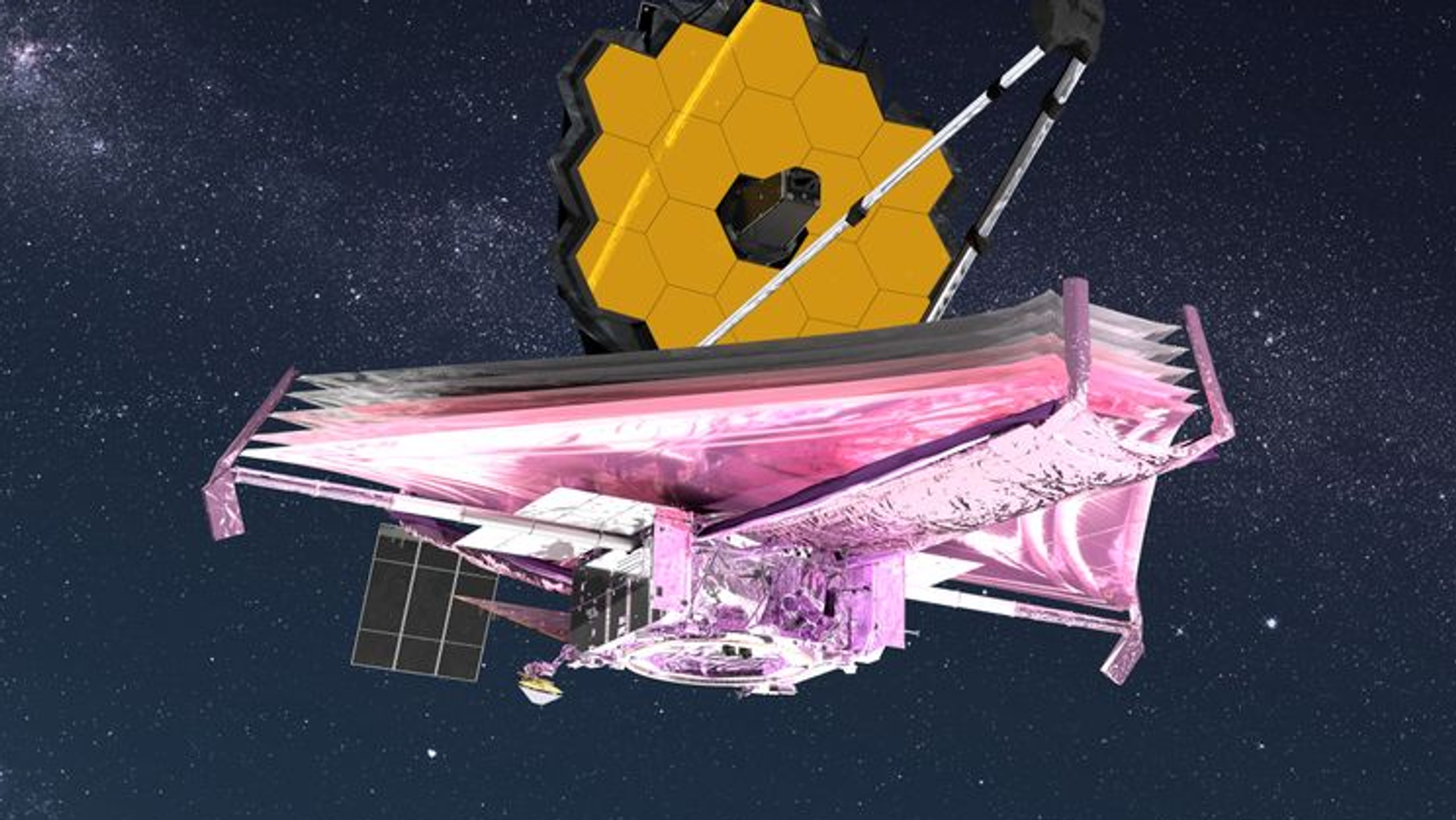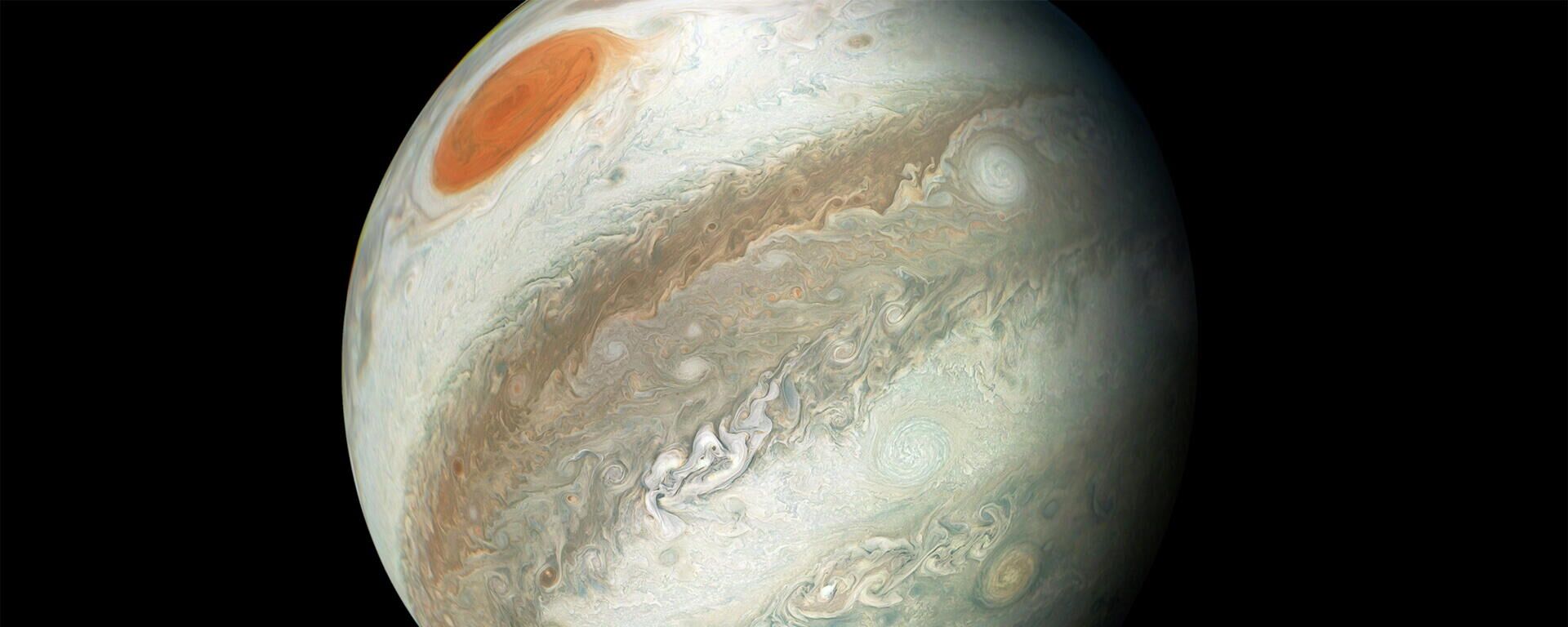https://sputnikglobe.com/20220718/james-webb-telescope-already-damaged-beyond-repair-1097436255.html
James Webb Telescope Already Damaged Beyond Repair
James Webb Telescope Already Damaged Beyond Repair
Sputnik International
The James Webb Space Telescope launched on Christmas Day 2021 and reached its orbit in February of this year. Four months of calibration and testing followed... 18.07.2022, Sputnik International
2022-07-18T21:11+0000
2022-07-18T21:11+0000
2023-04-12T16:58+0000
nasa
james webb space telescope
technology
science & tech
space
https://cdn1.img.sputnikglobe.com/img/07e6/01/04/1092025504_0:91:744:510_1920x0_80_0_0_dab27cd7b746f1d40475c2dc24d4b99d.png
The $10 billion James Webb Space Telescope has already been irreparably damaged by a micrometeorite. A new paper published after Webb's first images electrified the internet with its amazing views of our universe, revealed that the beryllium and gold mirror was hit by six micrometeorites during its setup phase between February and June. Five of those strikes caused negligible damage that could be corrected, but a sixth has permanently damaged humanity’s most powerful telescope.The Webb telescope sits in orbit a million miles away from earth, unlike its predecessor Hubble, which sits in low earth orbit. Because of this, Webb was expected to be less vulnerable to micrometeorites and other kinds of space debris and so its mirror is exposed to space, unlike Hubble’s.The news is not all bad for space junkies; Webb is still expected to perform at a level above what is needed for its mission. NASA engineers expected that Webb would occasionally be hit by micrometeorites; the problem is that they didn’t expect it to happen this often, or do this much damage.Pre-launch modeling expected that Webb would be hit by one micrometeorite roughly once a month. As mentioned, Webb has been hit six times from when it entered its orbit in February to June, when its calibration was completed. Scientists are hoping that these impacts are a fluke, and that collisions like the one that damaged Webb permanently will only happen once every several years. They are investigating the pre-launch models to see if there were any faulty assumptions.The impact is thought to have occurred between May 22 and 24.The primary mirror of the Webb telescope is made out of 18 smaller hexagonal mirrors constructed out of beryllium metal and coated with gold. It is designed to detect very faint infrared light. The light is reflected onto a second small mirror which is then observed by Webb’s instruments. Each hexagonal mirror can be slightly adjusted, compensating for small impacts, but the sixth impact was too large to compensate for. The wavelength error of the damaged segment was raised from 56 nanometers to 178 nanometers after ground control did all the adjustments they could.The mission for the telescope will continue unabated for now, though scientists may avoid pointing the mirror in towards its orbit to lessen the number of collisions it faces; there is more debris inside Webb’s orbit than outside of it.One piece of good news: it is now estimated that Webb has enough propellant to keep it in orbit for two decades, twice as long as predicted. However, impacts of micrometeorites and space weathering from the Sun may force it to end its mission before that time.
https://sputnikglobe.com/20220713/james-webb-space-telescope-snaps-pictures-of-jupiter-during-testing-1097287489.html
Sputnik International
feedback@sputniknews.com
+74956456601
MIA „Rosiya Segodnya“
2022
News
en_EN
Sputnik International
feedback@sputniknews.com
+74956456601
MIA „Rosiya Segodnya“
Sputnik International
feedback@sputniknews.com
+74956456601
MIA „Rosiya Segodnya“
nasa, james webb space telescope, technology, science & tech, space
nasa, james webb space telescope, technology, science & tech, space
James Webb Telescope Already Damaged Beyond Repair
21:11 GMT 18.07.2022 (Updated: 16:58 GMT 12.04.2023) The James Webb Space Telescope launched on Christmas Day 2021 and reached its orbit in February of this year. Four months of calibration and testing followed before its first images, capturing light from stars and galaxies more than 100 billion light years away, were released to the public.
The $10 billion James Webb Space Telescope has
already been irreparably damaged by a micrometeorite. A new paper
published after Webb's first images electrified the internet with its amazing views of our universe, revealed that the beryllium and gold mirror was hit by six micrometeorites during its setup phase between February and June. Five of those strikes caused negligible damage that could be corrected, but a sixth has permanently damaged humanity’s most powerful telescope.
The Webb telescope sits in orbit a million miles away from earth, unlike its predecessor Hubble, which sits in low earth orbit. Because of this, Webb was expected to be less vulnerable to micrometeorites and other kinds of space debris and so its mirror is exposed to space, unlike Hubble’s.
The news is not all bad for space junkies; Webb is still expected to perform at a level above what is needed for its mission. NASA engineers expected that Webb would occasionally be hit by micrometeorites; the problem is that they didn’t expect it to happen this often, or do this much damage.
Pre-launch modeling expected that Webb would be hit by one micrometeorite roughly once a month. As mentioned, Webb has been hit six times from when it entered its orbit in February to June, when its calibration was completed. Scientists are hoping that these impacts are a fluke, and that collisions like the one that damaged Webb permanently will only happen once every several years. They are investigating the pre-launch models to see if there were any faulty assumptions.
The impact is thought to have occurred between May 22 and 24.
The primary mirror of the Webb telescope is made out of 18 smaller hexagonal mirrors constructed out of beryllium metal and coated with gold. It is designed to detect very faint infrared light. The light is reflected onto a second small mirror which is then observed by Webb’s instruments. Each hexagonal mirror can be slightly adjusted, compensating for small impacts, but the sixth impact was too large to compensate for. The wavelength error of the damaged segment was raised from 56 nanometers to 178 nanometers after ground control did all the adjustments they could.
The mission for the telescope will continue unabated for now, though scientists may avoid pointing the mirror in towards its orbit to lessen the number of collisions it faces; there is more debris inside Webb’s orbit than outside of it.
One piece of good news: it is now estimated that Webb has enough propellant to keep it in orbit for two decades, twice as long as predicted. However, impacts of micrometeorites and space weathering from the Sun may force it to end its mission before that time.




